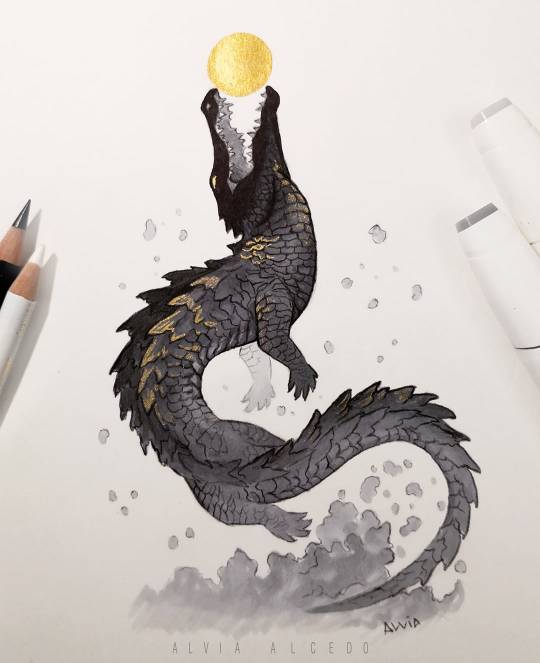Dipping toes into Kemeticism, keeping a virtual altar. Been invited to work for Nut, trying to figure out what to do. Would like to work with Anubis, Sobek, and Amun (and possibly Ra in some form as well), but unsure how to ask them. Feel free to send me advice or asks. Might change my blog name later if I'm given a sign for something more appropriate. Figured this would be good for someone... contemplating communication with the gods.
Don't wanna be here? Send us removal request.
Photo

Head of Anubis Egyptian, 18th-19th Dynasty, 1540-1190 B.C. Medium: Ebony Inlay. Private Collection.
3K notes
·
View notes
Photo

Statue of Anubis
Seated statue of the jackal-headed god Anubis, associated with mummification and the afterlife. Anubis is one of the most iconic gods of ancient Egypt. This statue dates to the Late Period, 26th Dynasty, ca. 664-525 BC. Now in the Ny Carlsberg Glyptotek, Copenhagen.
499 notes
·
View notes
Photo

Amulet of Ram
In Pharaonic Egypt the ram was revered for its procreative abilities and as a symbol of virility. Its cult has been attested since the beginning of Egyptian civilization.
The ram was associated with different deities: Khnum in Elephantine, Amun in Thebes, Heryshaf in Heracleopolis and Banebdjedet in Mendes. Moreover, it was one of the four animal representations of the sun together with the hawk, the lion and the bull.
Glazed steatite amulet. Late Period, ca. 664-332 BC. Now in the Egyptian Museum of Turin.
321 notes
·
View notes
Text



Temple of Sobek, Krokodopolis
Assassins Creed Origins
320 notes
·
View notes
Photo

Relief of Sobek
Relief depicting the crocodile god Sobek wearing Atef crown, detail of a wall carving from the Double Temple of Sobek and Haroeris, Kom Ombo.
321 notes
·
View notes
Text

Sun eating celestial crocodile from African tribal belief. It causes sun eclipse 🐊
19K notes
·
View notes
Photo

Plaque of a Ram
Stone Relief plaque depicting a Ram, representation of god Amun, or of Banebdjedet, the ram god of Mendes. Ptolemaic Period, ca. 305-30 BC. Now in the Art Institute of Chicago.
161 notes
·
View notes
Photo

. Photo by @chrisroams Hundreds of people drive over this bridge daily, with no pull outs that emphasize stopping or signs indicating what looms beneath. Lean over and you’ll see a hoard of crocodiles finding the rare shade along the river. This was looking straight down, not a drone. Can you spot the second one? San José Province. 🐊 #AT2G #ndutu #Nature #Wildlife #Animals #SanJosé #Crocodiles #Crocodiles #Wildeyesa #Earthcapture https://www.instagram.com/p/B9AAToJAfsK/?igshid=rdj7zcspssrx
913 notes
·
View notes
Text

~ Head of a Crocodile.
Place of origin: Egypt
Date: ca. 380-250 B.C.
Period: Late Period; 30th dynasty-early Ptolemaic Period
Medium: Dark blue glass
827 notes
·
View notes
Photo

Sobek emerges from the waters of the Nun, the Primordial Chaos, to bring forth a great star – maybe it’s our sun. Prints available here.
444 notes
·
View notes
Photo

Ram’s Head Pendant
Silver pendant in shape of ram’s head with the uraeus on it, with incised details. From Tahpanhes, 2.75 x 2.07 cm. Late Period, 26th Dynasty, ca. 664-525 BC. Now in the British Museum. EA 18300
222 notes
·
View notes
Photo

Stele Dedicated to Amun-Re, by the Foreman Baki
This round-topped stele is carved in low relief and painted in several colors. The pictorial plane is divided into two registers, the upper one containing two rams facing each other. The animals, with cobras rising on their foreheads, wear tall headdresses composed of two tall plumes with a solar disk at the center.
Between them is a small offering table with lotus flowers. The mirror image hieroglyphic inscription refers to the rams and reveals their divine nature as that of Amun-Re. In the register below, foreman Baki is shown in the pose of adoration.
New Kingdom, 19th Dynasty, reigns of Seti I and Ramesses II, ca. 1290-1213 BC. Painted limestone, from Deir el-Medina. Now in the Egyptian Museum of Turin. C. 1549
231 notes
·
View notes
Photo

Ram’s-head Amulet
This amulet was probably made for a necklace worn by one of the Kushite kings. Representations show these pharaohs wearing a ram’s-head amulet tied around the neck on a thick cord, the ends of which fall forward over the shoulders.
Rams were associated with the god Amun-Re, particularly in Nubia, where he was especially revered. Gold, h. 4.2 cm; w. 3.6 cm; d. 2.0 cm; weight 65 grams.
Third Intermediate Period/ Kushite, 25th Dynasty, ca. 760-656 BC. Now in the Metropolitan Museum of Art. 1989.281.98
1K notes
·
View notes
Photo

Votive Ram’s Head
This splendid bust of a ram with curving horns and stylized mane is placed on an inscribed pedestal. The top of the pedestal is marked by a cavetto cornice and a torus molding. The front has a shallow incised decoration of Amenhotep I in front of an offering stand. He is identified as “Amenhotep of Karoi”, meaning of southern Nubia.
Other inscriptions mention the “Priest of Amun of Karnak with right of access, the scribe of the barn of the temple of Amun, Penta-weret” as the donor of the statue. The offering formula mentions, of course, “Amun-Re, the Ruler of Thebes”, appearing in this statue in his form of a ram.
The ram’s head apparently played a special role during certain festivals in Thebes. It served as the hieroglyph for “majesty, respect”, especially used for Amun. This majestic, monumental votive gift, a donation from Penta-weret to honour the deified king Amenhotep I in the temple of Amun at Karnak, is one of the more important creations of the later Ramesside Period.
New Kingdom, 20th Dynasty, Ramesside Period, ca. 1189-1070 BC. Serpentinite, from Karnak Temple Complex. Now in the Kunsthistorisches Museum, Vienna. Inv. 1029
Photo: Erich Lessing
204 notes
·
View notes






